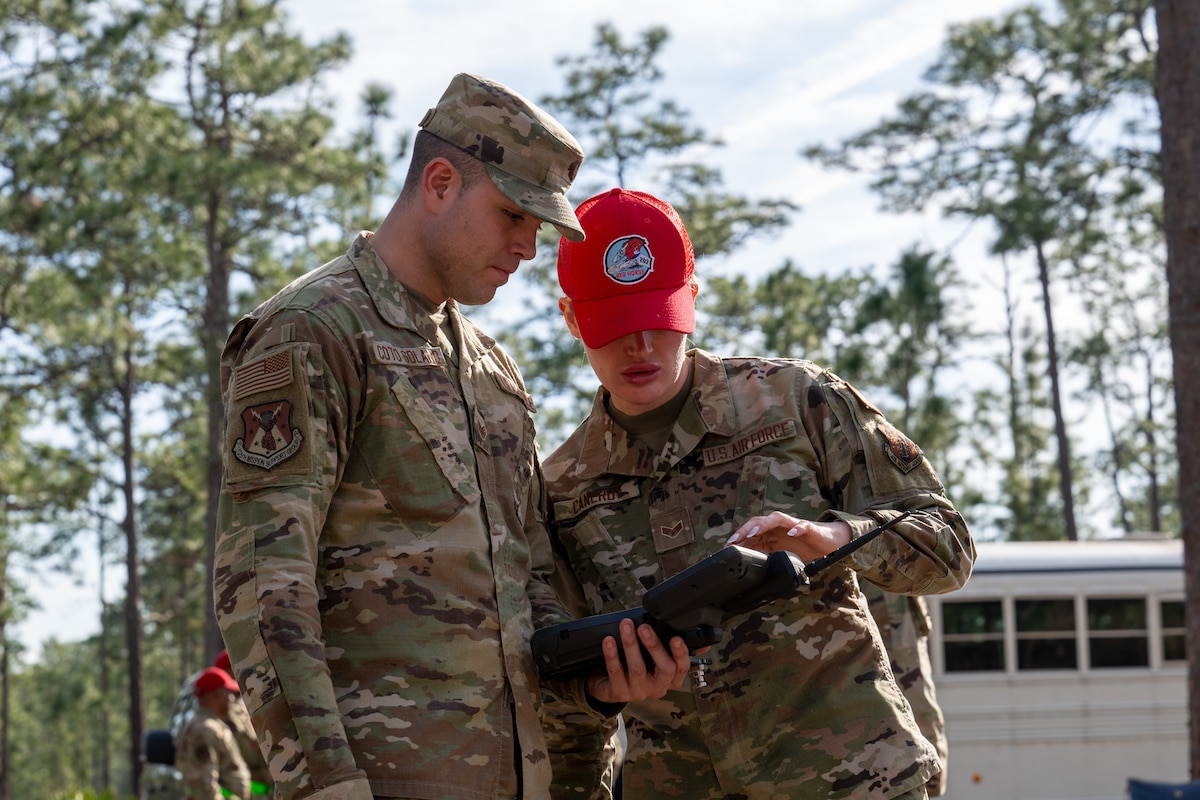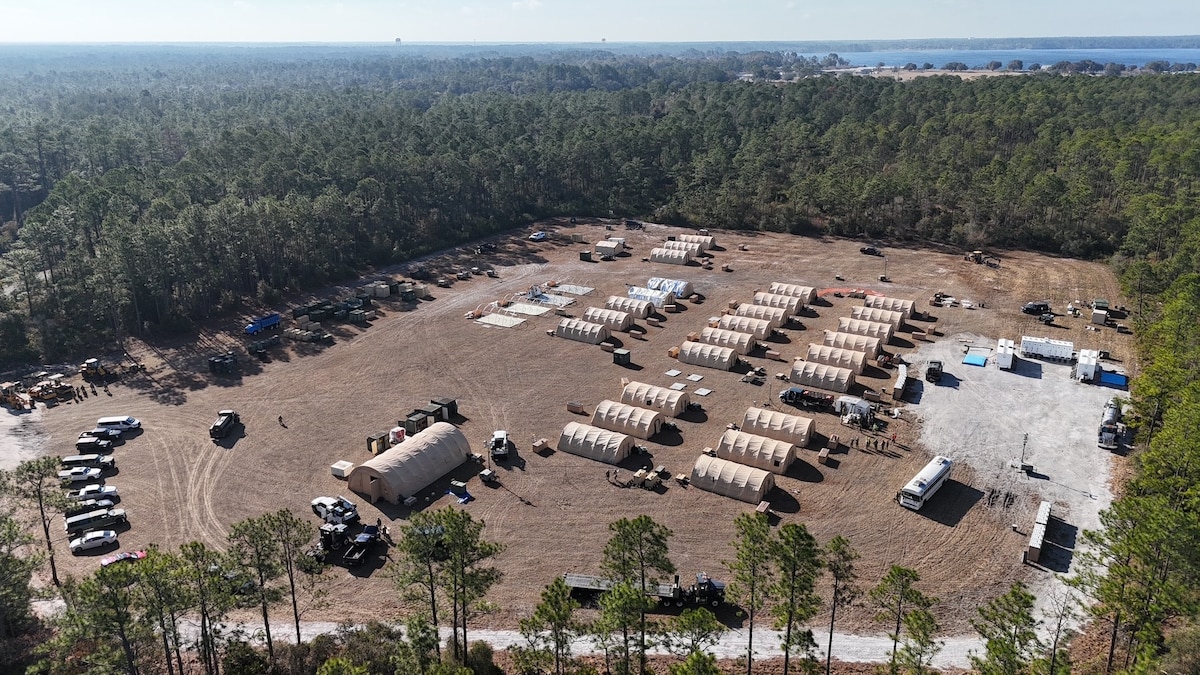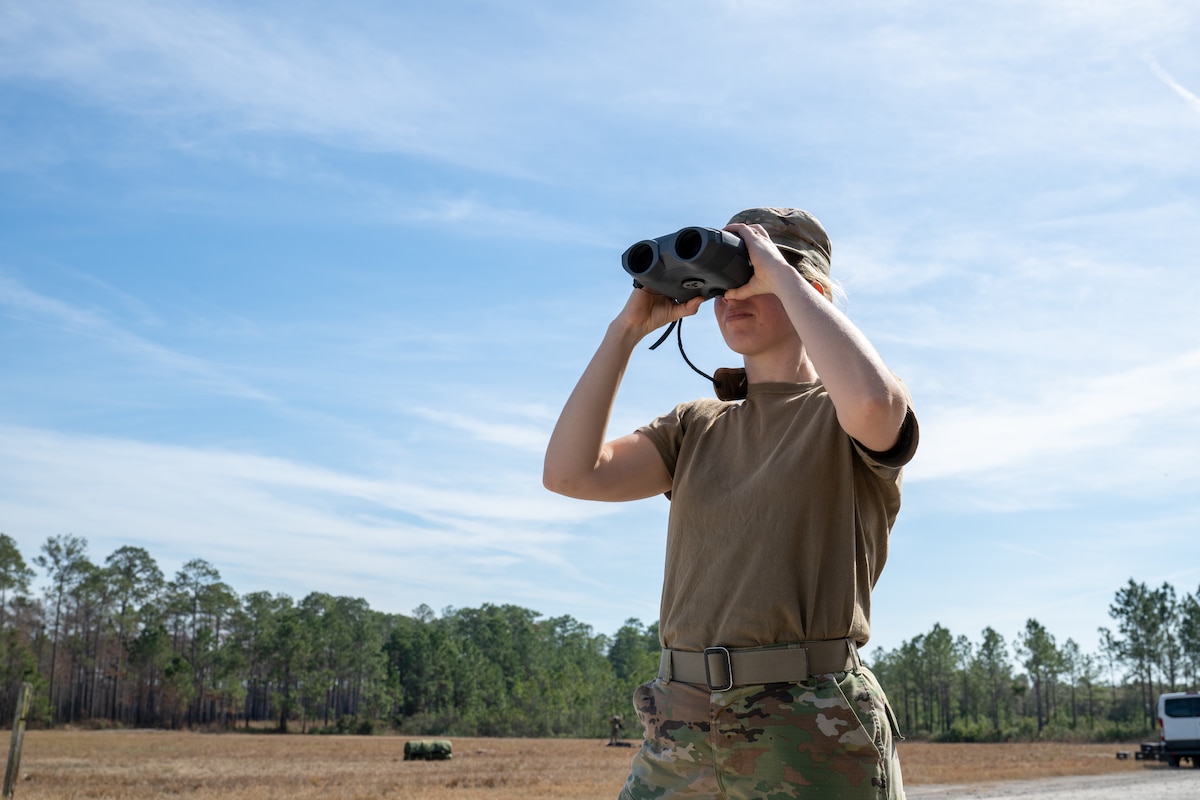Approximately 250 Air National Guard and active-duty Airmen from five U.S. states converged on Camp Blanding Joint Training Center Jan. 30 to Feb. 1, for February Exercise 2025, a rigorous three-day exercise designed to test their readiness for global contingencies. Reinforcing the Agile Combat Employment Strategy, the exercise focused on engineering, communications, weather forecasting and bare-base operations under contested conditions.
The 2025 iteration of FEBEX introduced nighttime operations, providing a new level of added complexity. Participants underwent training in both daytime and nighttime environments, where they responded to simulated, real-world scenarios that mimic the dynamic conditions they may encounter during actual deployments. The exercise replicated challenges in the Indo-Pacific theater, preparing units for potential island-hopping missions and decentralized command structures necessary for modern conflict environments.
Strategic Importance
FEBEX 25 is more than just a training event - it is a critical component of the Department of Defense's shift toward increased readiness in the Indo-Pacific region. By implementing ACE, units enhance their ability to deploy rapidly and sustain operations in uncertain environments. The exercise showcased the Florida ANG's capability to adapt and respond, demonstrating the United States' commitment to resilience and operational flexibility.
"Our ability to operate in austere environments, establish communication networks and build infrastructure on short notice is critical to maintaining our competitive edge," said U.S. Air Force Chief Master Sgt. William Lamb, senior enlisted leader for the 125th Regional Support Group, Florida ANG. "FEBEX 25 ensures we are prepared for the realities of modern warfare."
Realistic and Comprehensive Training
The training ground at Camp Blanding transformed into a high-tempo exercise hub as multiple units worked together to execute mission-essential tasks. The Florida ANG 202nd Rapid Engineer Deployable Heavy Operational Repair Squadron Engineer Squadron took on one of the most critical assignments-establishing a fully functional bare-base in a contested environment. Airmen constructed a fully self-sustaining base which included temporary shelters, established power and water distribution systems and formed secure perimeters, all while responding to simulated enemy threats.
Setting up a bare base requires multiple operational elements working in unison. Civil engineers established temporary camps, generated electrical power, produced potable water, as well as utilized heavy equipment to quickly construction of an austere clay runway. Logistics personnel coordinated the movement of supplies, food and medical resources while security personnel ensured the safety of individuals on base by conducting perimeter sweeps and reinforcing defensive positions.
Meanwhile, the Florida ANG's 290th Joint Communications Support Squadron established robust command and control networks, linking operations with higher headquarters and ensuring seamless communication across the exercise area.
Using sophisticated forecasting tools, the Florida ANG's 159th Combat Weather Flight analyzed weather patterns to guide mission planning and ensure safety for personnel operating in the field. Their expertise informed operational planning, enabling effective adaptation to shifting weather patterns and underscoring the critical role of meteorological intelligence in supporting deployed operations.
Security and force protection remained top priorities throughout the exercise. Participants trained in defensive tactics, responding to simulated threats that tested their ability to secure the base. Chemical, biological, radiological and nuclear drills, electromagnetic pulse scenarios, and drone attacks required airmen to don protective gear and execute emergency protocols, ensuring they are prepared for the worst-case scenarios they may encounter in a real-world conflict.
"The complexity and scope of this year's exercise was designed to find our weaknesses and breaking points," said U.S. Air Force Major Joseph Correia, operations officer for the 202nd RED HORSE Squadron, Florida ANG. "From nighttime operations to contested environment scenarios, our teams were pushed to the limits, and they demonstrated remarkable resilience and adaptability."
A Tribute to Leadership and Legacy
The 2025 iteration of FEBEX was honorarily named "Exercise Thunder K", paying homage to the late U.S. Air Force Col. Frank W. Kozdras, the first commander of the 202nd RED HORSE Squadron, which celebrated its 40th anniversary during this year's exercise. Kozdras' pioneering spirit and commitment to excellence continue to inspire the unit's mission.
"This exercise is a testament to Kozdras' legacy," Correia said. "We honor his vision by pushing the boundaries of what we can accomplish in challenging conditions."
Demonstrating Readiness on a Global Scale
FEBEX 25 served as a powerful demonstration of the Regional Support Group's ability to project power and sustain operations under real-world conditions. The integration of ACE ensures that units can adapt quickly to emerging threats and deploy to remote locations with minimal infrastructure. The exercise also reinforced partnerships with total-force and interagency partners, strengthening interoperability and enhancing mission success.
"By conducting exercises like this, we demonstrate not only our readiness but also our resolve," said U.S. Air Force Chief Master Sgt. Tom Barron, senior enlisted leader for the 202nd RED HORSE squadron, Florida ANG. "This is about reassuring our allies and deterring potential adversaries. Our message is clear: we are prepared."
As the final hours of FEBEX 25 unfolded, airmen remained focused on their missions, pushing through fatigue and challenging conditions. The skills and lessons gained from this exercise will carry forward, ensuring that the Florida ANG remains at the forefront of global readiness.
"This is about more than just an exercise," said Senior Master Sgt. Ross Chappel, inspector general superintendent for the 184th Wing, Kansas Air National Guard. "This is about shaping the future of our force and securing our nation's place on the global stage. They set the bar high for other units like mine, so we too can prepare at this level or rigor."
As FEBEX evolves, the Florida ANG's commitment to excellence and innovation remains steadfast, ensuring that its units are ready to meet any mission with professionalism and resolve.
FEBEX 25 hosted Air National Guard and active-duty airmen from the 125th Fighter Wing, Florida ANG, the 165th Services Squadron, Georgia ANG, the 184th Wing, Kansas ANG, the 203rd RED HORSE Squadron, Virginia ANG, and the 78th Medical Group, Robbins Air Force Base, Georgia.









